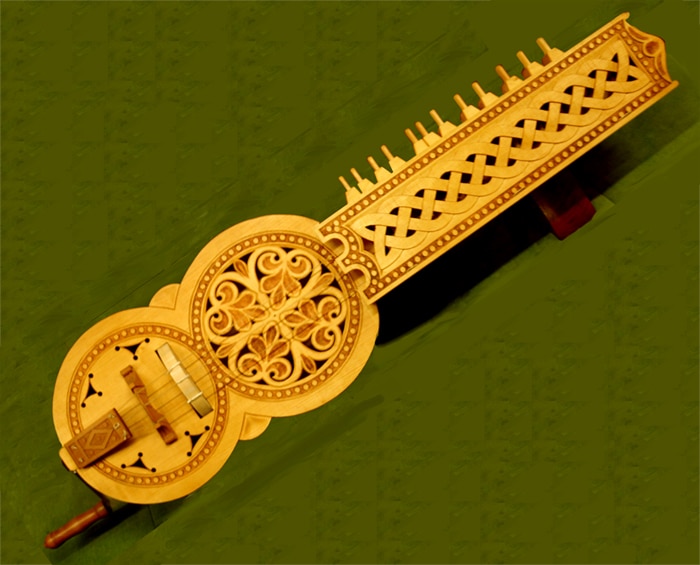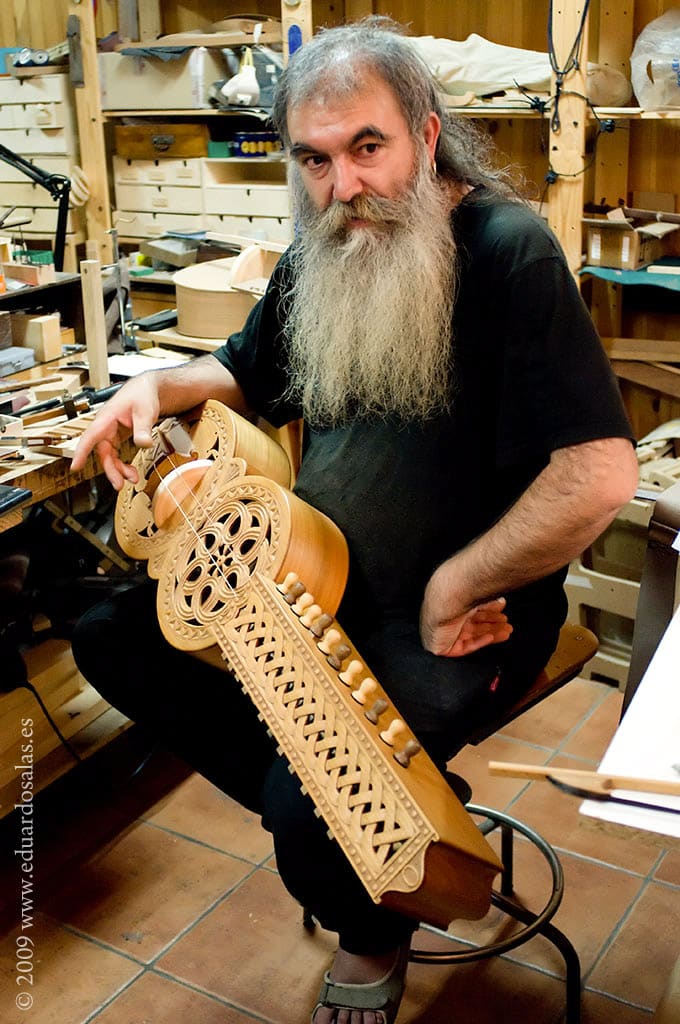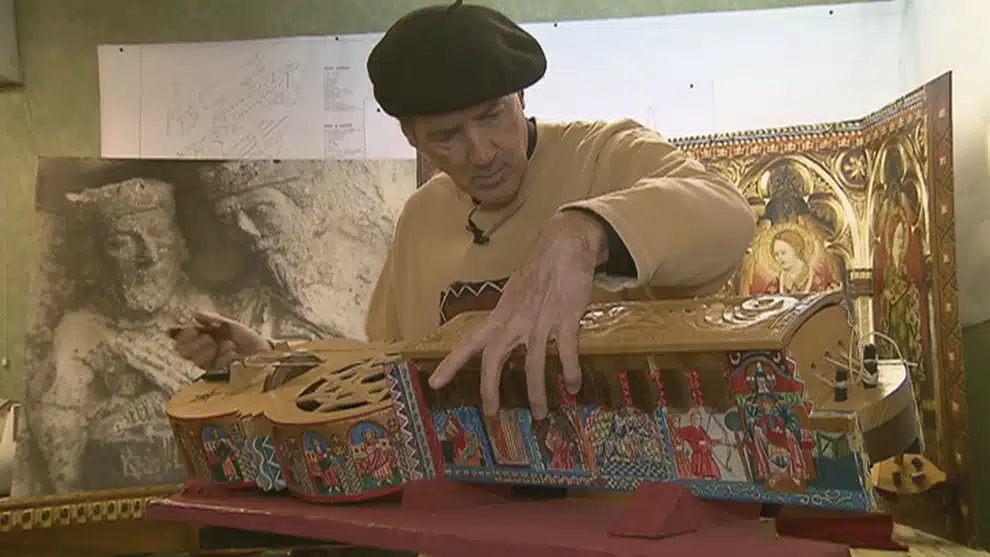
The Medieval hurdy gurdy is the real origin, here you will find the early examples of instruments of the medieval period dating aproximately from the year 1075 to the 1400, an ancient instrument with many years of history.
Types of Medieval Hurdy Gurdy
Organistrum: The organistrum was a predecessor to the modern hurdy-gurdy and was commonly used in religious music, particularly in the accompaniment of gregorian chant

Sinfonia: The Sinfonia or Symphonia is a box shaped hurdy gurdy that was popular during the 12th and 13th century, we can find beautiful iconography of the sinfonia in the cantigas of santa maria, one of the most iconic sources of spanish medieval music

Where does the medieval hurdy gurdy come from?
The first mention of the hurdy gurdy in history was in the form of the Organistrum in the Wolfenbüttel Manuscript, written in the year 1100 in Germany. This instrument was huge, in some cases more than 5 foot or 2m long, and for this reason, it needed 2 people to play it, one turning the crank, and another one pulling the keys
Religious music used the organistrum to acompany gregorian chant, it has 3 melody strings tuned to root note, fifth and octave, the long notes of the organum, made the infinite bow (wheel) very useful.
During the centuries the instrument evolved to smaller versions where one single musician could play alone.
Organistrum for sale
If you are looking for an organistrum for sale, I can point you to specialist luthiers where you can order or buy one, here are the TOP 3 experts in Organistrum Making.
Christian Rault

Christian Rault began his journey in classical Italian violin making under the tutelage of Giobatta Morassi at the school of Cremona after completing his studies at ENSAD in Paris. Upon moving to France in 1978, he honed his expertise in the restoration of 17th and 18th century instruments, in order to gain a better understanding of their construction, before ultimately dedicating himself to their creation with a focus on historical accuracy and sound restitution.
His passion for ancient sounds and baroque instruments deepened in the 1980s with the rediscovery of music from the Middle Ages and Renaissance. He noticed that the instruments being used by musicians at that time did not align with descriptions found in texts, illuminations, and medieval sculptures. This led Christian to embark on research in organology, which continues to influence his work in the studio today.
Jesus Reolid
In 1985, Jesus Reolid became attracted to ancient musical instruments and began constructing historical instruments through self-education. Their main focus was on medieval instruments, particularly the hurdy-gurdy.
In 1994, they co-founded the Iberian Hurdy-Gurdy Association, which organizes courses twice a year on the construction and playing techniques of various instruments, including the hurdy-gurdy, rabel, mandolin, nyckelharpa, and vihuela.
They also conduct educational workshops aimed at introducing techniques for building traditional and medieval instruments, frequently hosting luthier workshops in their Pelayos de la Presa workshop.
In 2002, Demian Reolid joined their workshop, taking responsibility for the plucked string instruments, and since 2013, Mario Unsain has been collaborating with them.

Antonio Poves

Antonio Poves, a musician, musicologist, and researcher of ancient music and instruments, has reconstructed various “organistra” (the plural of the Latin word “organistrum”) found in Spain. His focus has primarily been on previously unstudied instruments, including the “organistrum” of the Portico de San Miguel in Estella and the “organistrum” of the Monasterio de Piedra in Zaragoza. The latter is currently held at the Royal Academy of History in Madrid, where it has been since the last third of the 19th century.
Hurdy Gurdy Medieval Music
The hurdy-gurdy was a popular instrument in medieval music, medieval music and dance were closely interwined, and the hurdy gurdy played an important role in both.
The music played on the hurdy-gurdy was often upbeat and lively, and would have provided the perfect accompaniment for medieval dance, here you can see a couple of examples of hurdy gurdy music of the italian treccento
